Welche Highlights und Attraktionen dürfen Sie beim Urlaub in London auf keinen Fall versäumen? Hier finden Sie eine Liste der Top 10 Sehenswürdigkeiten von London!
Die Attraktionen, die Sie womöglich noch aus dem Englisch-Unterricht kennen, nehmen bei einer London-Reise Gestalt an: Houses of Parliament, Big Ben, St. Paul’s Cathedral, die Themse, die Royal Family, Fish’n’Chips, Shakespeare, das Globe Theatre,…
Unendlich lang scheint die Liste der Top-Sehenswürdigkeiten, die Sie bei einer Städtereise nach London keinesfalls versäumen dürfen! Zum Glück liegt der Großteil der Must-Sees dicht gedrängt im Zentrum der Weltmetropole und ist mit öffentlichen Verkehrsmitteln bequem zu erreichen.
Tipp: Mit dem London Pass sind viele Eintrittspreise vergünstigt. Manche Londoner Attraktionen, wie zum Beispiel der Tower of London oder Westminster Abbey, können damit sogar kostenlos besichtigt werden.
Inhaltsverzeichnis
Houses of Parliament
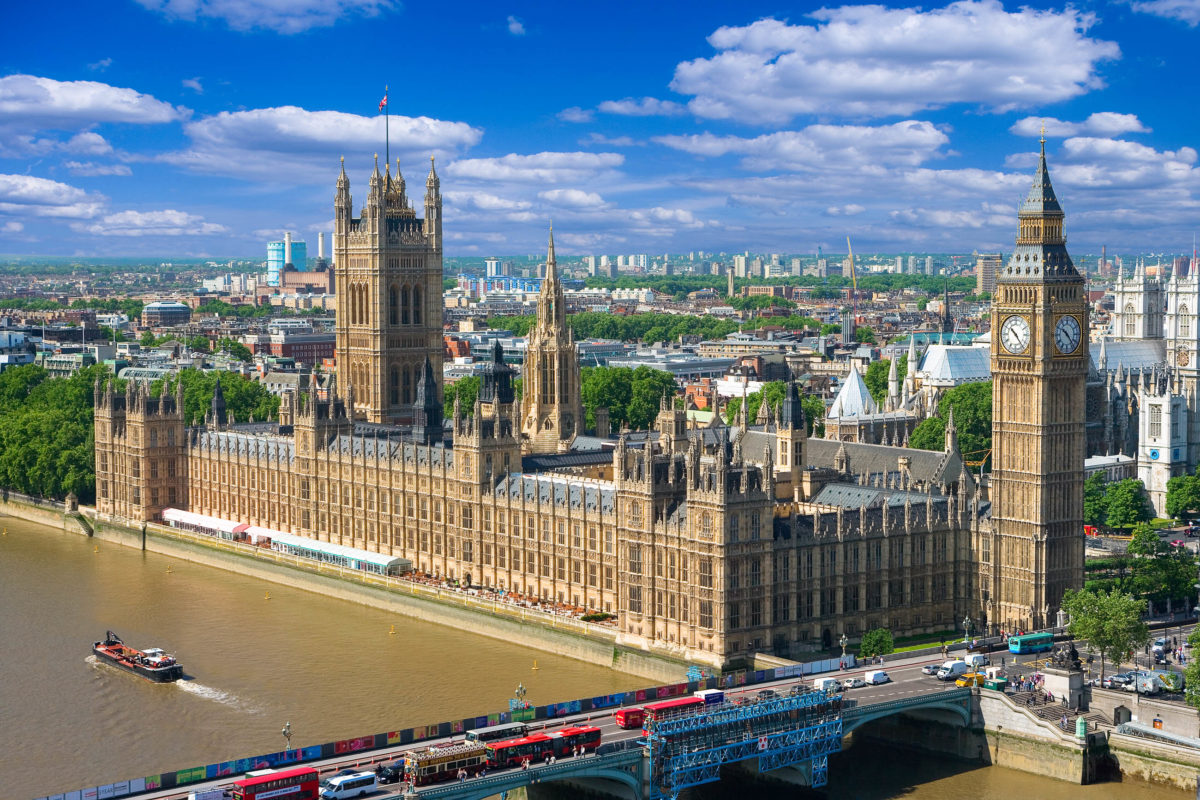
Die Houses of Parliament, auch bekannt als „Palace of Westminster“, am Parliaments Square beherbergen das britische Parlament und damit die Regierung von Großbritannien.
Bis 1529 residierten in den Houses of Parliament die englischen Könige. Erst Henry VIII. verlegte seinen Wohnsitz in den Whitehall Palace. Ein Großbrand im Jahr 1834 zerstörte das ursprüngliche Gebäude. Der heutige gotische Prachtbau wurde nach dem Zweiten Weltkrieg nach den Entwürfen aus dem 19. Jahrhundert originalgetreu wieder aufgebaut.
Auf der ganzen Welt bekannt macht das Londoner Parlamentsgebäude sein 96 Meter hoher Glockenturm an der Nordwestecke. „Big Ben“ heißt dabei nicht der Turm selbst (das ist der Elizabeth Tower), sondern die 13,5 Tonnen schwere Glocke in seinem Inneren. Jede Stunde läutet sie eine Melodie aus Händels „Messias“.
Londons Wahrzeichen darf allerdings nur von britischen Staatsbürgern erklommen werden. Durch die Houses of Parliament werden Führungen angeboten und an Samstagen während der Sommermonate können Besucher sogar Debatten beiwohnen.
Buckingham Palace
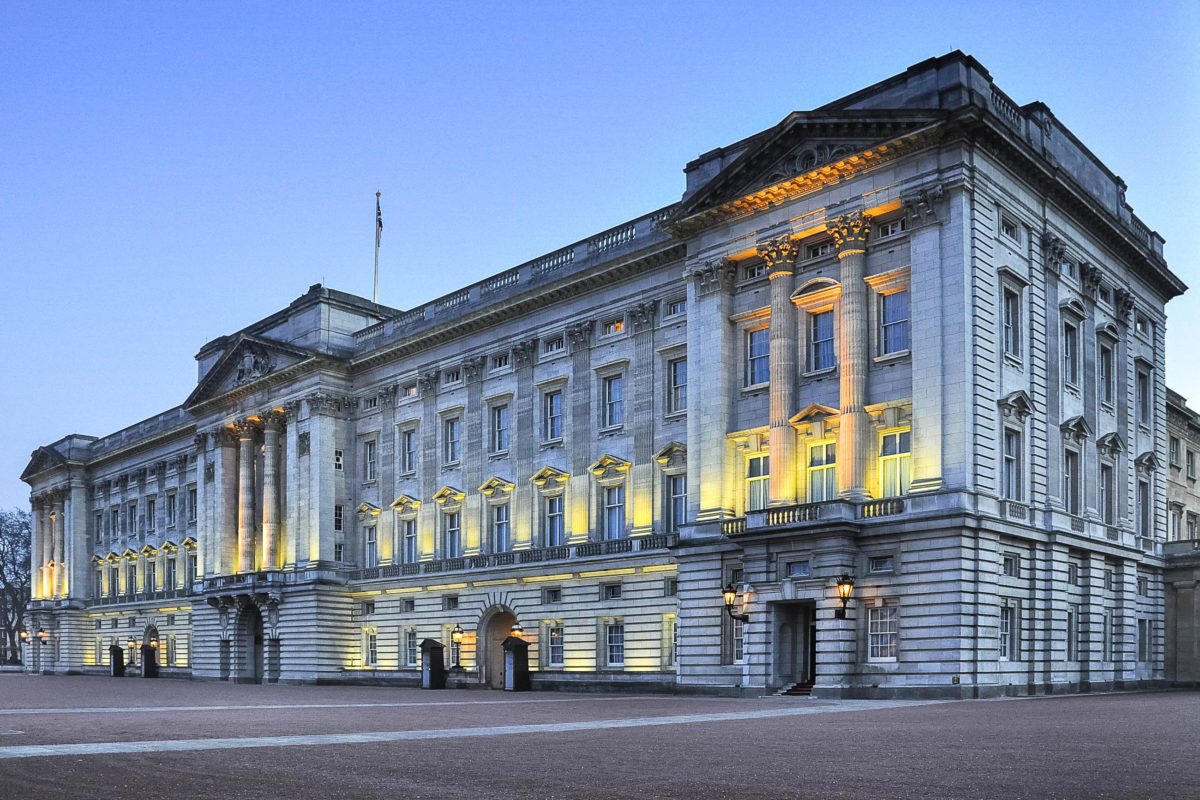
Die Queen of England wohnt mit ihrer Familie längst nicht mehr in den Houses of Parliament, sondern im nahe gelegenen Buckingham Palace. Dieser wurde ursprünglich als Stadthaus für John Sheffield, den 1. Duke of Buckingham and Normanby, errichtet. Königin Victoria war die erste, die den prächtigen Palast zum Sitz der britischen Krone machte. In den 19 State Rooms und dem Großen Ballsaal werden internationale Bankette und offizielle Staatsempfänge abgehalten.
Vor der eindrucksvollen Fassade des Buckingham Palace findet jeden Tag um 11:30 (von August bis März jeden zweiten Tag) die zeremonielle Wachablöse statt. In die ansonsten völlig regungslosen Infanterie-Soldaten mit ihren markanten roten Uniformen und den Bärenfellmützen kommt dann plötzlich Bewegung. Eine dreiviertel Stunde lang dauert das „Changing of the Guards“, welches kostenlos besichtigt werden kann.
Der Palast der Königin von England ist leider nur von außen zu besichtigen. Außer im Sommer, wenn die Queen in Balmoral weilt, können die majestätischen Räumlichkeiten und der größte private Garten Londons von innen besichtigt werden.
Tower of London

Der berühmt-berüchtigte Tower of London ist fast 1000 Jahre alt, UNESCO-Weltkulturerbe und wohl einer der gefürchtetsten Bauten in Europas Geschichte. In der trutzigen Festung aus dem 11. Jahrhundert schmorten einst diverse Gefangene, bis sie ans Schafott geführt wurden.
Mittlerweile darf jeder, der den Tower of London besucht die alten Mauern auch wieder lebendig verlassen, die letzte Hinrichtung fand am 14. August 1941 statt. Die gesamte Geschichte der Festungsanlage sowie der britischen Monarchie kann im Festungsmuseum nachvollzogen werden. Außerdem werden hier die Kronjuwelen der Royal Family aufbewahrt. Der Schatz soll unglaubliche 20 Milliarden Pfund wert sein!
Im Tower of London sind übrigens immer 6 Raben zugegen, denn einer Legende aus dem 17. Jahrhundert zufolge würde der Festungsturm ohne sie einstürzen und großes Unheil über England bringen.
Tower Bridge
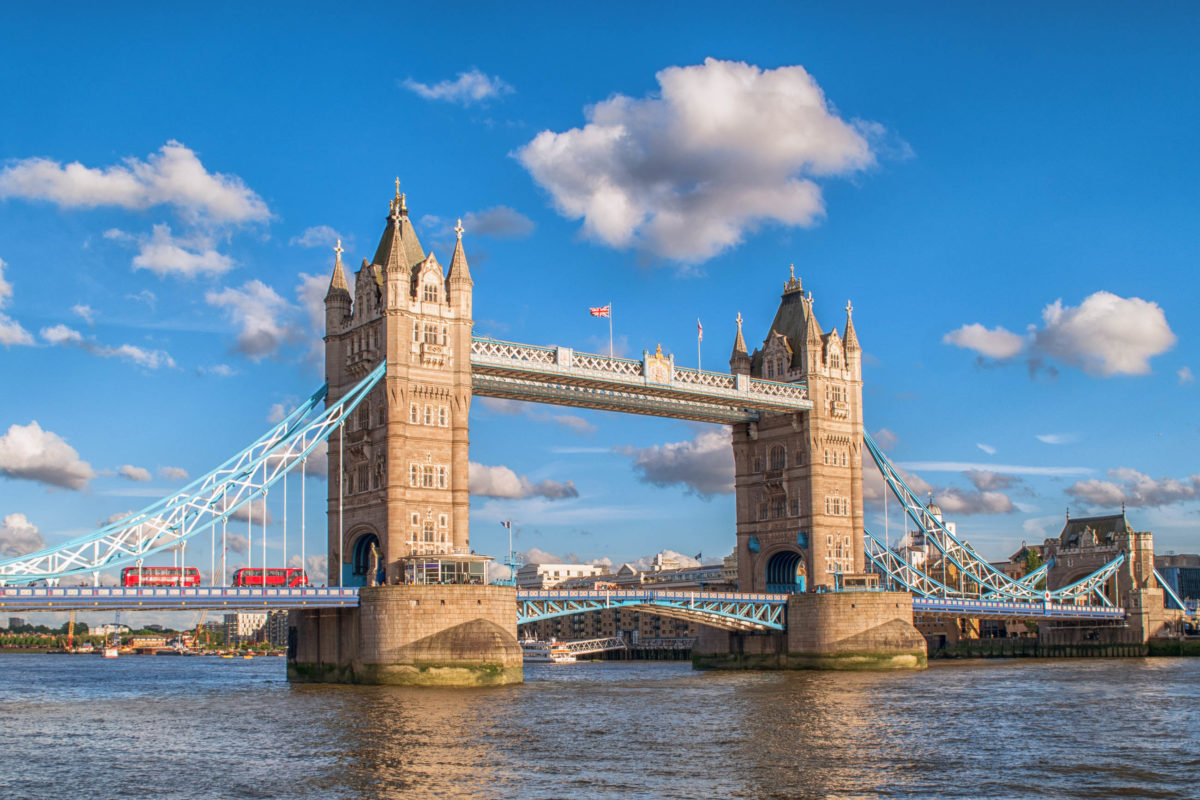
Direkt an den Tower of London schließt die neugotische Tower Bridge an, die wohl bekannteste Brücke Londons und eine der schönsten der Welt. 1894 wurde sie eröffnet, seither führt sie zwischen den beiden 65 Meter hohen Türmen Fußgeher und den Autoverkehr auf einer Länge von 244 Metern über die Themse.
Ein Highlight der Tower Bridge Ausstellung ist der Glasboden beim Fußgängerübergang – ein etwas mulmiges Gefühl, von hier nach unten und über die Dächer Londons in die Ferne zu sehen. Das Aufklappen der Brücke für durchziehende Schiffe ist von hier am spektakulärsten anzusehen.
Westminster Abbey
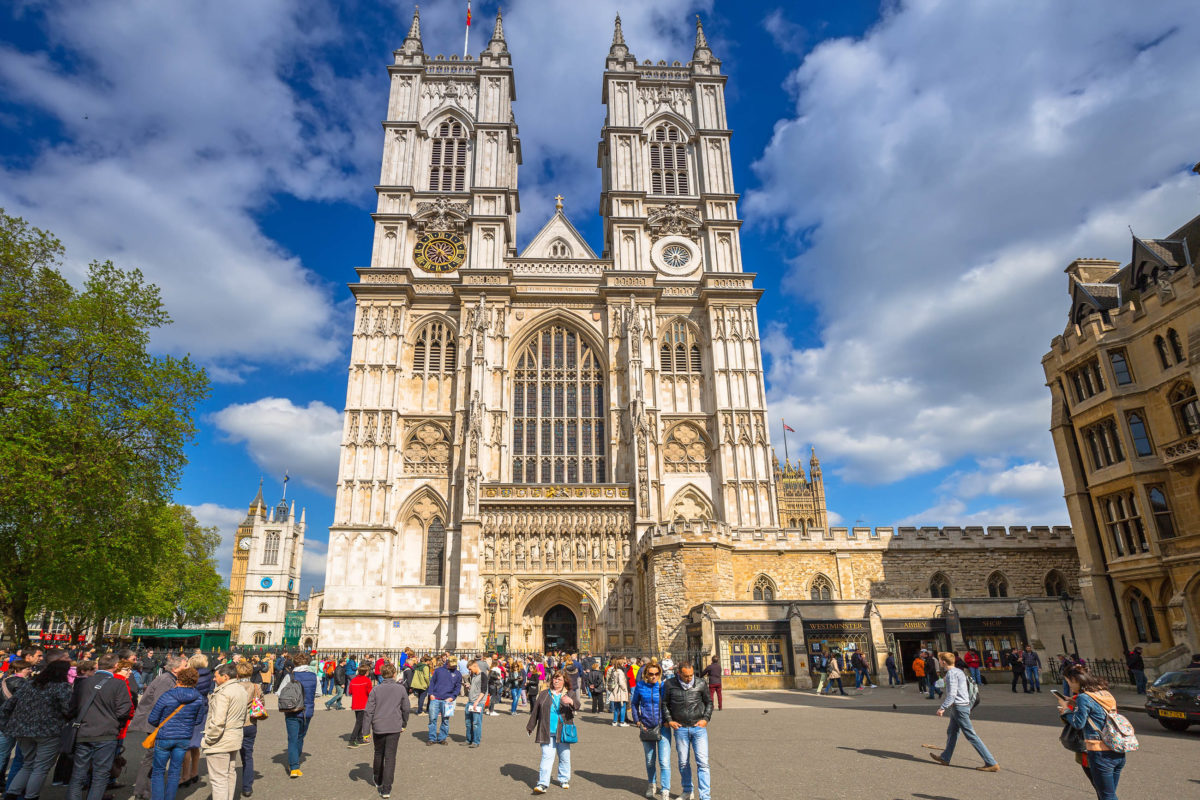
Westminster Abbey wurde von 1245 bis 1269 erbaut, ist UNESCO Welterbe und die wohl berühmteste Kirche von ganz England. Hier, gleich neben den Houses of Parliament, werden die britischen Könige gekrönt und begraben, ebenso wie andere bedeutende Persönlichkeiten aus Englands Geschichte. Dementsprechend befinden sich hier die letzten Ruhestätten großer Prominenz, darunter Elisabeth I., Maria Stuart, Isaac Newton oder Charles Dickens.
In der Unterkirche informiert ein kleines Museum über die Geschichte von Westminster Abbey und die verflossenen Könige von England.
Tipp: Ab 17 Uhr ist der Eintritt zum Westminster Abbey kostenlos! Noch dazu gibt’s eine Gratis-Hörprobe des Kirchenchors – ein akustisches Erlebnis in den heiligen Hallen!
London Eye
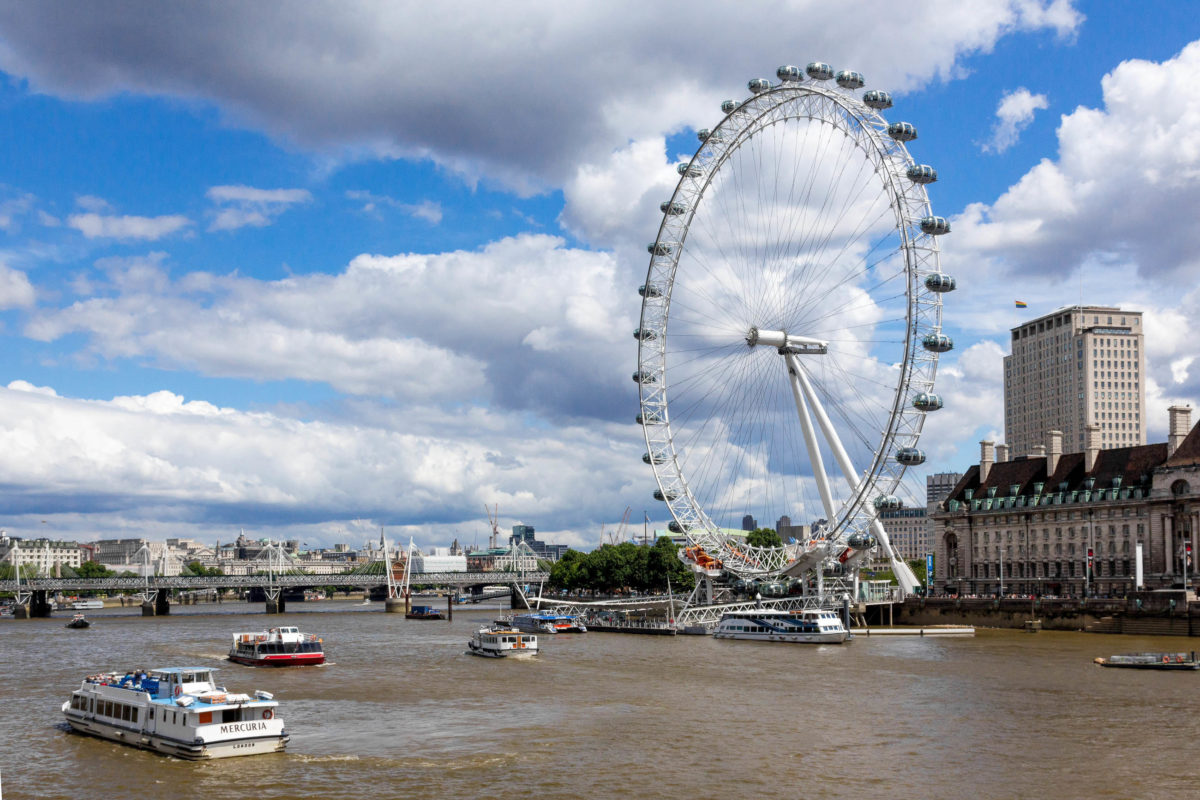
Den wohl besten Blick auf die britische Weltmetropole bietet das 1998 erbaute London Eye. Vom größten Riesenrad Europas fällt der Blick aus 135 Metern Höhe bis zu 40 Kilometer weit ins Land. Gläserne Gondeln garantieren bis zu 30 Personen einen atemberaubenden Rundumblick, der eine halbe Stunde lang genossen werden kann.
Zum Jahreswechsel stellt das London Eye mit spektakulärem Feuerwerk eines der Zentren der Silvesterfeierlichkeiten dar. Wer live dabei sein will, muss hier allerdings extra Tickets kaufen.
Tipp: Wer die Warteschlange umgehen möchte, kann online etwas teurere Tickets für das London Eye kaufen.
British Museum
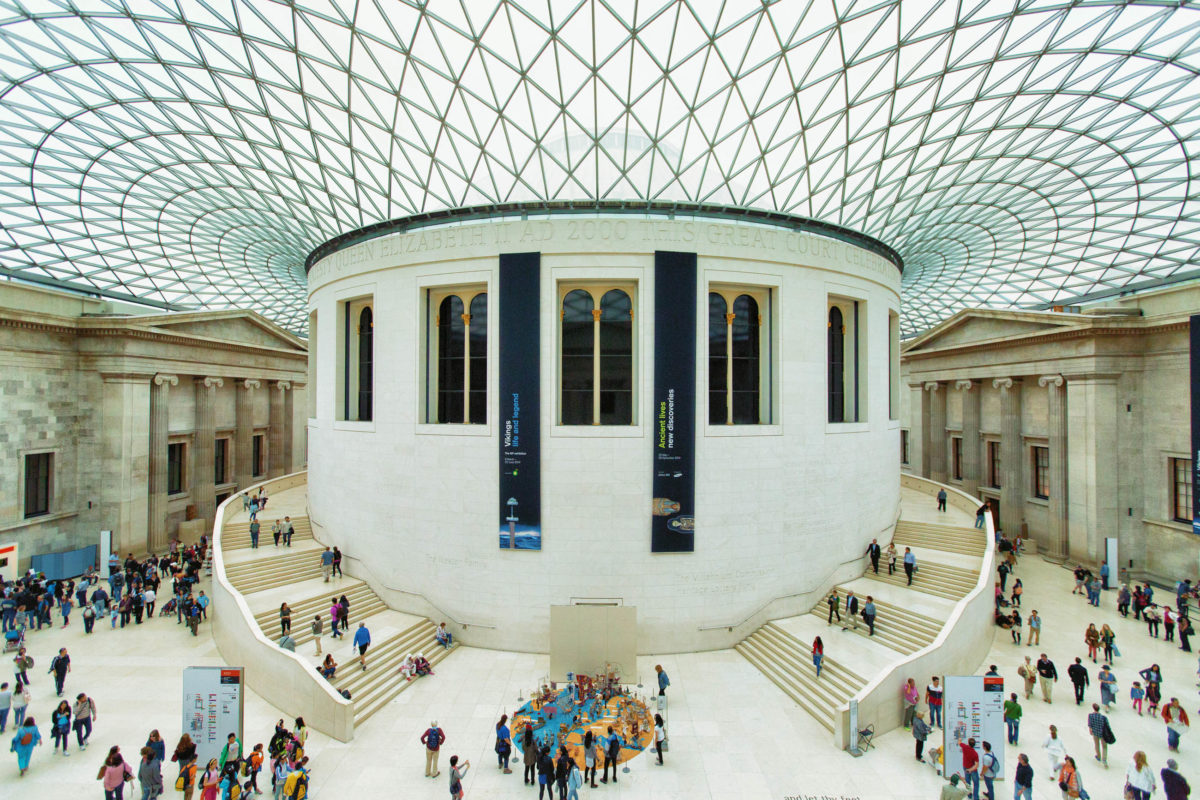
Das British Museum zählt zu den ältesten Museen der Welt. Es wurde im 18. Jahrhundert gegründet und ist damit älter als die Vereinigten Staaten von Amerika. Das British Museum in London zeigt die Geschichte der gesamten Menschheit, vom alten Ägypten über die Blütezeit der Griechen bis zur Gegenwart.
Und das Beste daran: Der Eintritt ist völlig kostenlos! Gerade deshalb sollten bei großem Interesse mehrere Besuche eingeplant werden, um die Ausstellungen richtig zu genießen. Die Fülle der Exponate ist auch für Hartgesottene an einem Tag fast zu viel!
Im British Museum wurde übrigens „Nachts im Museum“ mit Ben Stiller gedreht.
St. Paul’s Cathedral
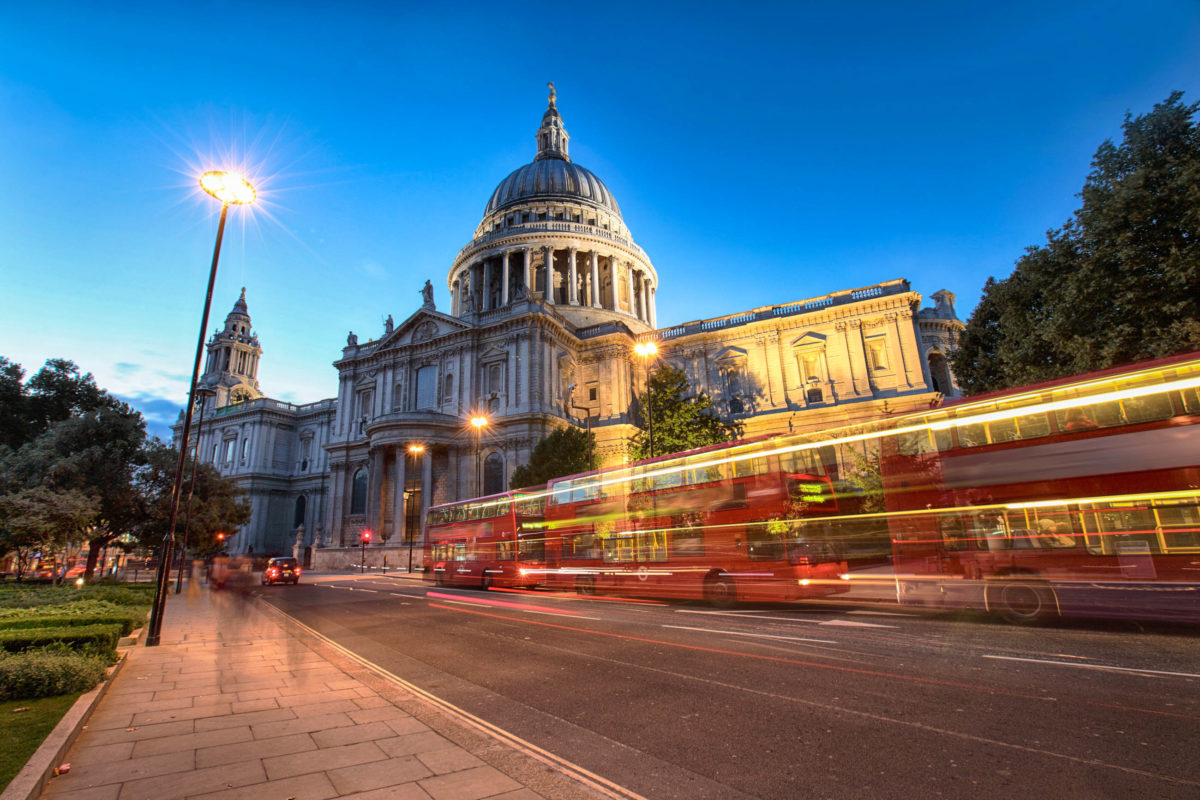
Neben Westminster Abbey ist die St. Paul’s Cathedral die zweite wichtige Kirche wenn es um die Sehenswürdigkeiten Londons geht. In Londons Hauptkirche gaben sich unter anderem Prinz Charles und Lady Diana das Ja-Wort, wurde Admiral Nelson begraben und das 50jährige Jubiläum der Queen gefeiert.
Die St. Paul’s Cathedral entstand als neue Bischofskirche im Zuge von Londons Wiederaufbau nach dem verheerenden Brand der Innenstadt im Jahr 1666. Ihr Bau dauerte rund 40 Jahre und sollte mit ihrer Pracht sogar den Petersdom in Rom übertreffen.
Doch nicht nur historisch, sondern auch architektonisch ist die St. Paul’s Cathedral von enormer Bedeutung. Mit ihrer gigantischen Kuppel und der 365 Fuß hohen Laterne zählt der klassizistische Barockbau zu den größten Kathedralen der Welt. Auch eine Flüstergalerie und die größte Glocke Großbritanniens sind hier zu finden. Vom Aussichtspunkt am Fuß der Laterne aus offenbart sich ein fantastischer Blick über das Häusermeer von London.
Trafalgar Square
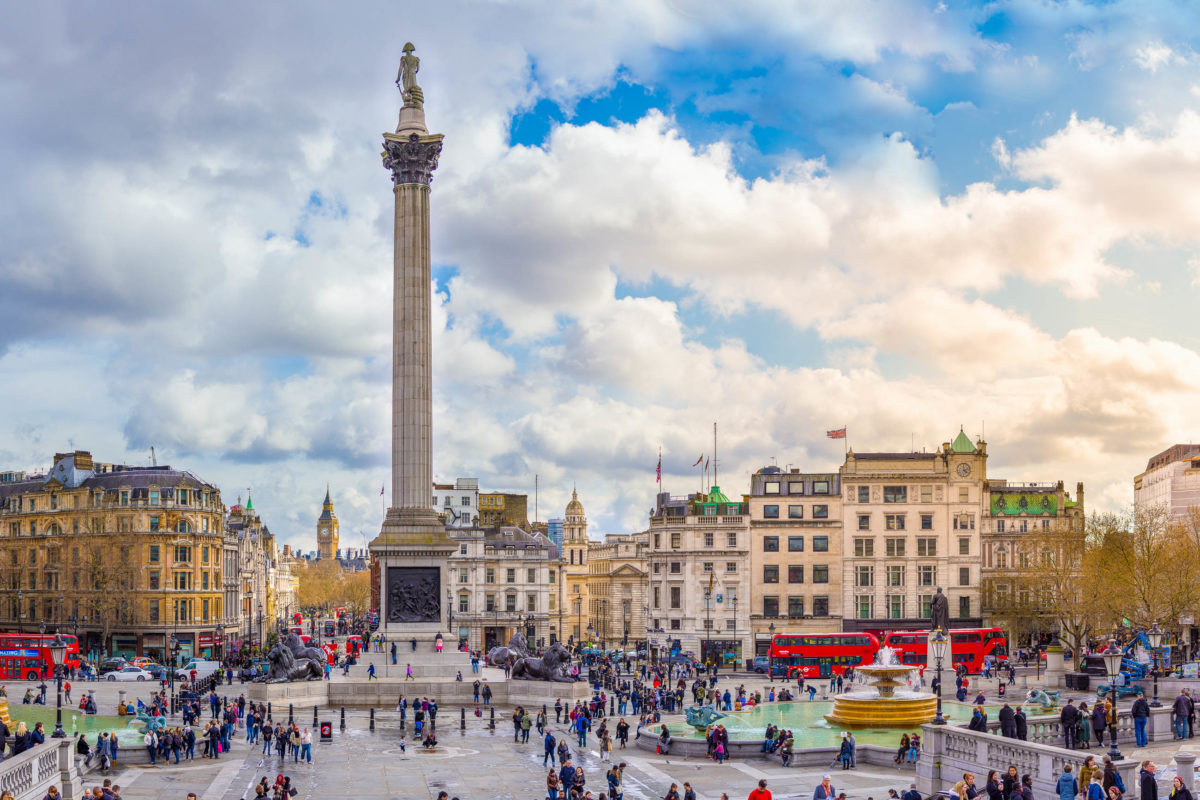
Der Trafalgar Square erinnert an die schicksalsträchtige Seeschlacht von Trafalgar im Jahr 1805, als Lord Nelson den Sieg über die Spanier und Franzosen davontrug und England damit die Vorherrschaft auf See sicherte. Dementsprechend thront flankiert von zwei Springbrunnen eine eindrucksvolle Statue des berühmten Admirals auf dem Trafalgar Square.
Gemeinsam mit dem Platz markiert sie am Kreuzungspunkt der großen Einkaufsstraßen Whitehall, The Mall und Pall Mall das pulsierende Zentrum von London.
Und auch einige Londoner Sehenswürdigkeiten sind hier zu finden. Die National Gallery ist eines der wichtigsten Kunstmuseen Londons und die anglikanische Kirche St. Martin-in-the-Fields ist die Kirche des Königshauses und der Admiralität. Letztere fällt vor allem durch ihren griechisch anmutenden Portikus auf, der zuerst heftig kritisiert und dann weltweit des Öfteren nachgeahmt wurde.
Hyde Park
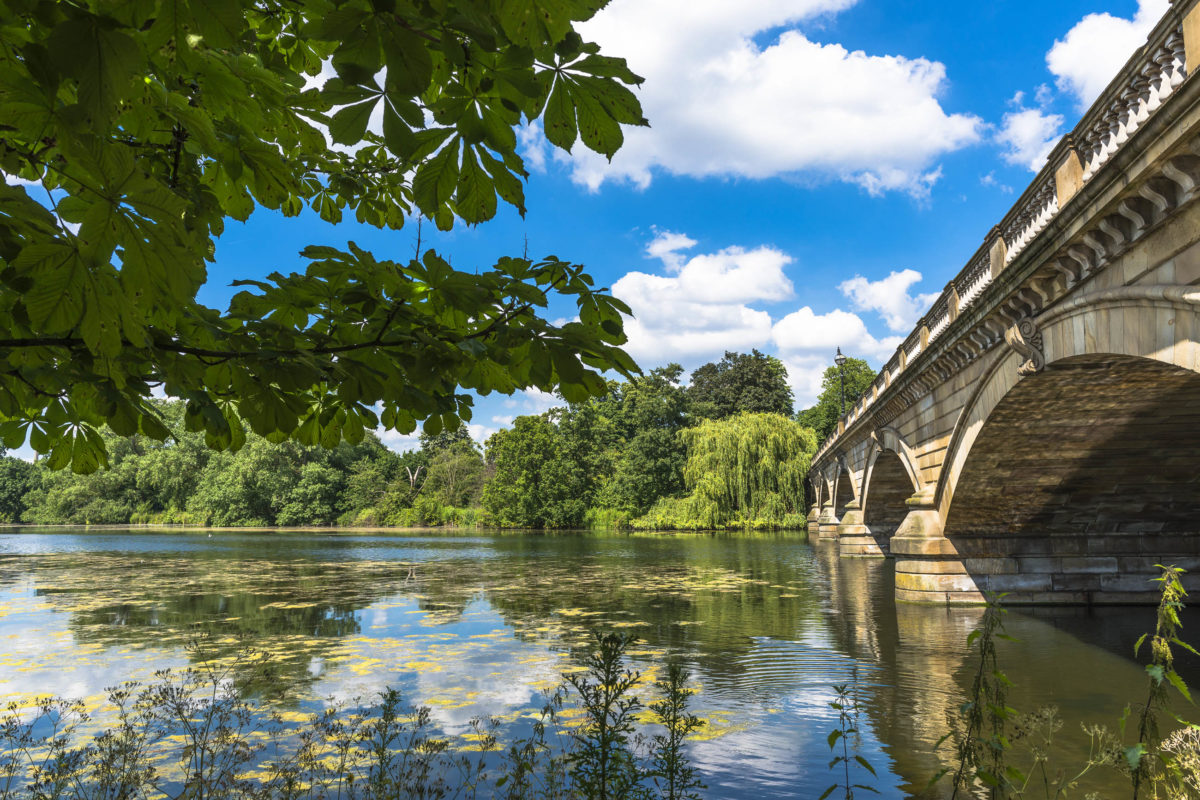
Der Hyde Park ist der größte Park Londons und einer der berühmtesten der Welt. Hier findet man inmitten von Autolärm und Stahlbeton eine grüne Oase, die von den Einheimischen für Mittagspausen, Spaziergänge, Sport und Picknicks genutzt wird. Im Sommer erklingt im Hyde Park dank zahlreicher Open-Air-Konzerte Musik verschiedenster Stilrichtungen.
Mit einer Fläche von 142 Hektar ist der Hyde Park sogar größer als Monaco! Zwischen den zahlreichen Wegen, Wiesen und Wäldern zählen der Serpentine See mit Ruderbooten, Badestellen und Angelmöglichkeit, der wunderschöne Rosengarten, eine Reitbahn und eine Bowling-Bahn zu den beliebtesten Attraktionen.
BILDER: Top Sehenswürdigkeiten von London




